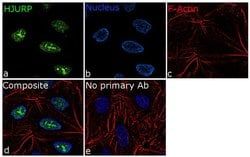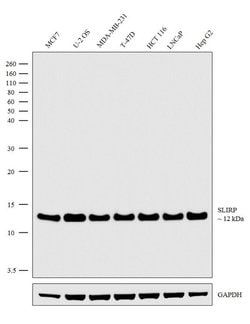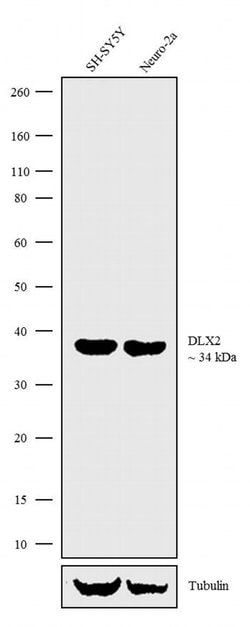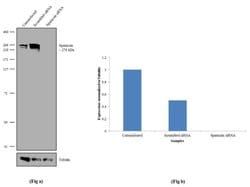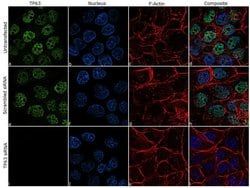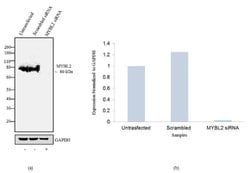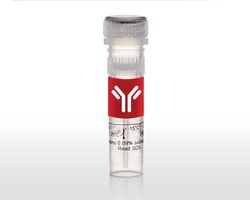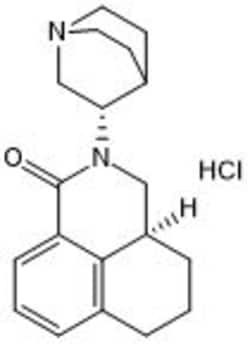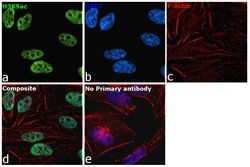p130 Recombinant Rabbit Monoclonal Antibody (7H2L13), Invitrogen™
Manufacturer: Invitrogen
Select a Size
| Pack Size | SKU | Availability | Price |
|---|---|---|---|
| Each of 1 | 70-384-7-Each-of-1 | In Stock | ₹ 44,500.00 |
70-384-7 - Each of 1
In Stock
Quantity
1
Base Price: ₹ 44,500.00
GST (18%): ₹ 8,010.00
Total Price: ₹ 52,510.00
Antigen
p130
Classification
Recombinant Monoclonal
Concentration
0.5 mg/mL
Formulation
PBS with 0.09% sodium azide, pH 7.4
Gene Accession No.
Q08999
Gene Symbols
RBL2
Immunogen
Peptides corresponding to human p130 [1) aa175-aa192 2) aa1122-aa1139]
Quantity
100 μg
Primary or Secondary
Primary
Target Species
Human
Product Type
Antibody
Isotype
IgG
Applications
Western Blot
Clone
7H2L13
Conjugate
Unconjugated
Gene
RBL2
Gene Alias
130 kDa retinoblastoma-associated protein, FLJ26459, p130, PPAR-alpha-interacting complex protein 128, PRB2, PRIC128, RB transcriptional corepressor like 2, Rb2, rb2 p130, Rbl2, RBR-2, retinoblastoma-like 2, retinoblastoma-like 2 (p130), retinoblastoma-like protein 2, Retinoblastoma-related protein 2
Host Species
Rabbit
Purification Method
Protein A
Regulatory Status
RUO
Gene ID (Entrez)
5934
Content And Storage
Store at 4°C short term. For long term storage, store at -20°C, avoiding freeze/thaw cycles.
Form
Liquid
Related Products
Description
- This antibody is predicted to react with Monkey, Mouse, Rat, Bovine
- RBL2 (also known as p130) or Retinoblastoma-like protein 2 is a key regulator of entry into cell division
- It is directly involved in heterochromatin formation by maintaining overall chromatin structure and (in particular) that of constitutive heterochromatin by stabilizing histone methylation
- RBL2 recruits and targets histone methyltransferases KMT5B and KMT5C leading to epigenetic transcriptional repression
- It controls histone H4 'Lys20' trimethylation
- It probably also acts as a transcription repressor by recruiting chromatin-modifying enzymes to promoters
- RBL2 serves as a potent inhibitor of E2F-mediated trans-activation and associates preferentially with E2F5.
